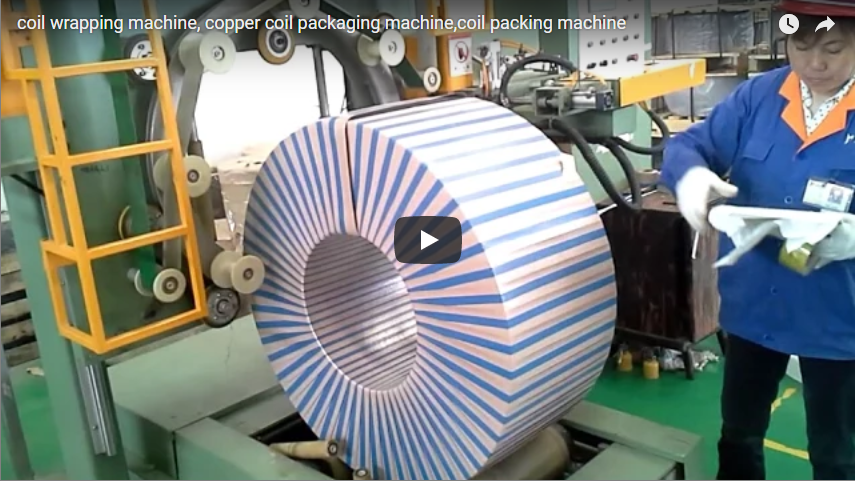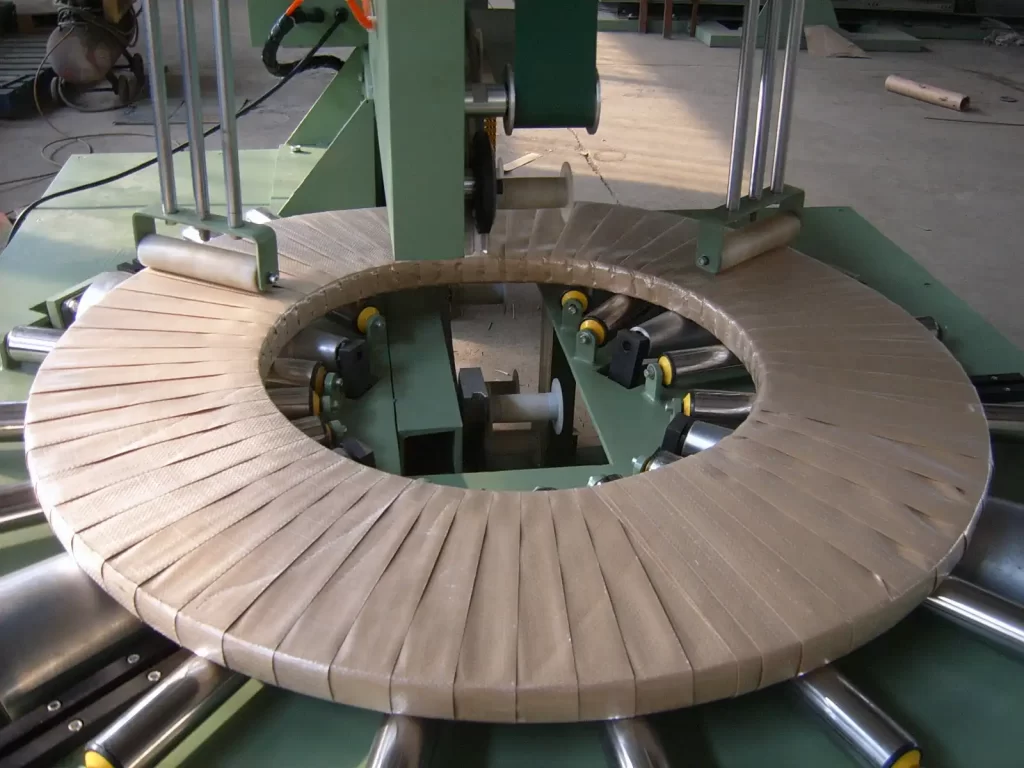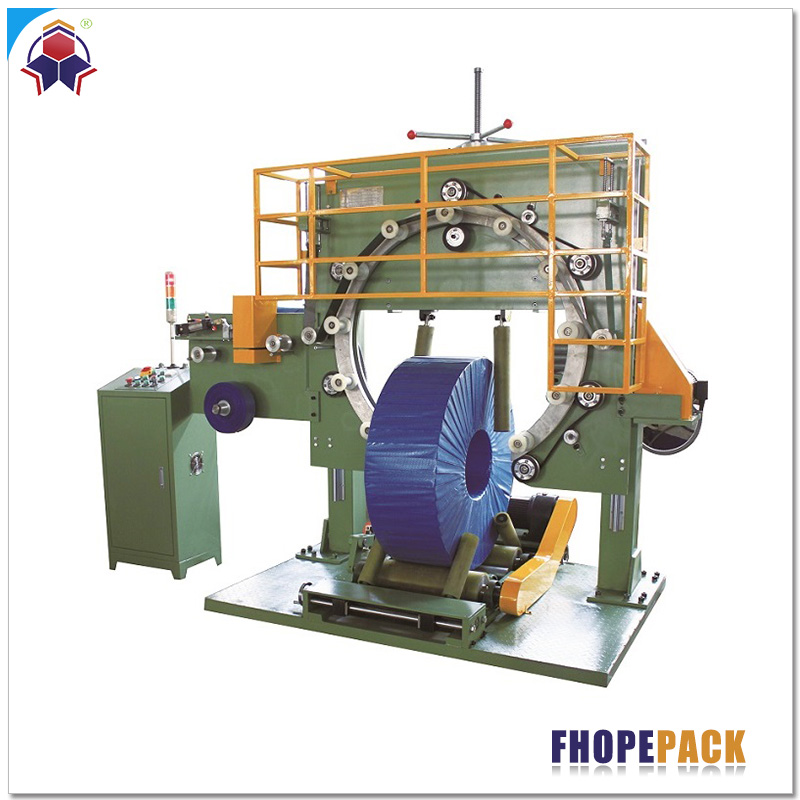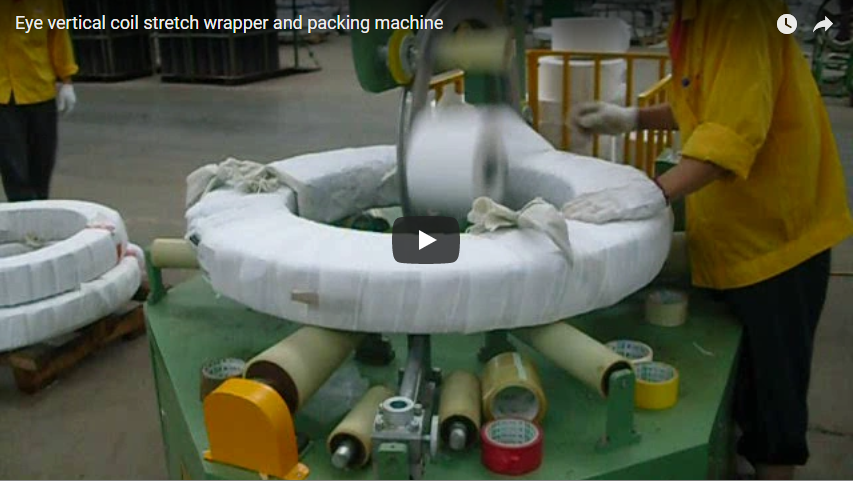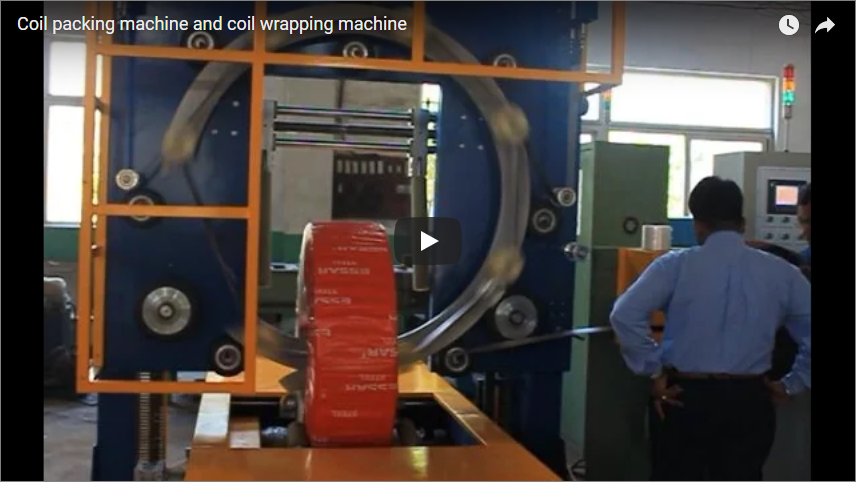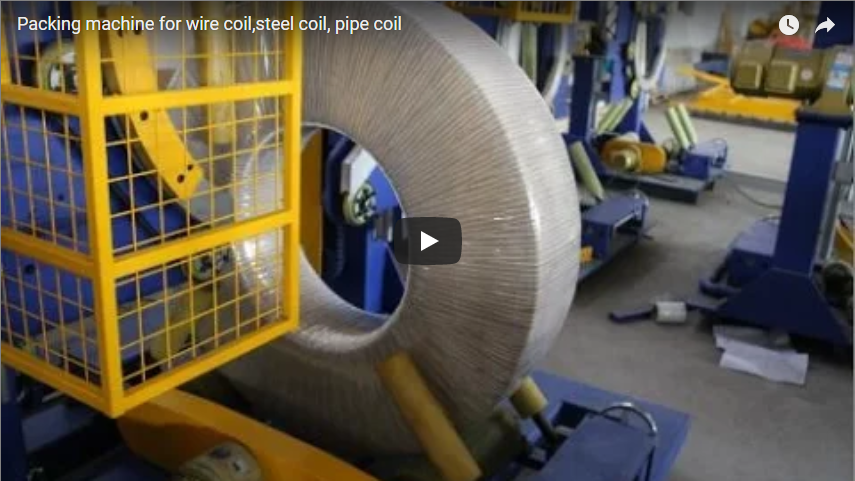Boosting Efficiency and Protection: A Deep Dive into the Automatic Copper Tube Coil Packing Machine
Handling and packaging copper tube coils presents unique challenges in industrial settings. Ensuring product integrity, preventing damage during transit and storage, and optimizing workflow efficiency are paramount. Manual packaging methods often fall short, leading to inconsistencies, higher labor costs, and potential product damage. This is where automated solutions, specifically the Automatic Copper Tube Coil Packing Machine, provide significant advantages. This article offers a comprehensive look at this essential equipment, blending technical insights with practical considerations.
1. The Limitations of Manual Copper Coil Packaging
Before diving into the automated solution, it's crucial to understand the pain points it addresses. Manual wrapping of copper tube coils often involves:
- Inconsistent Tension: Leading to loose packaging or, conversely, potential deformation of softer copper tubes.
- Higher Risk of Damage: Manual handling increases the chances of scratching, denting, or introducing contaminants.
- Labor Intensity: Wrapping heavy or numerous coils manually is physically demanding and time-consuming.
- Material Waste: Inconsistent application can lead to excessive use of stretch film or other wrapping materials.
- Safety Concerns: Repetitive motions and handling heavy coils can pose ergonomic risks to workers.
2. Introducing the Automatic Copper Tube Coil Packing Machine
An Automatic Copper Tube Coil Packing Machine is specialized industrial equipment designed to automate the process of wrapping copper tube coils securely and efficiently. It utilizes various packaging materials, most commonly stretch film, but also potentially VCI paper or other protective layers, to encase the coil for protection, handling, and unitization.
3. Core Operational Principles: A Technical Perspective
Understanding how this machine operates reveals its efficiency:
- Coil Loading: Coils are typically fed onto an infeed conveyor or placed directly onto the machine's support rollers or turntable, depending on the design.
- Material Dispensing: A roll of packaging material (e.g., stretch film) is mounted on a dispenser carriage integrated into a rotating ring or arm.
- Wrapping Cycle:
- The coil is positioned within the wrapping station.
- The wrapping ring or arm rotates through the eye of the coil, dispensing the packaging material.
- Simultaneously, rollers rotate the coil itself, ensuring complete coverage around its circumference.
- The machine precisely controls the overlap of the wrapping material for optimal coverage and stability.
- Tension Control: Sophisticated systems (often utilizing variable frequency drives - VFDs) maintain consistent film tension throughout the wrap, ensuring a secure package without damaging the copper tubes. This is critical for maintaining coil shape and integrity.
- Automated Cutting & Sealing: Upon cycle completion, the machine automatically cuts the wrapping material and secures the tail end (often using heat sealing or clamping mechanisms), ensuring a clean finish.
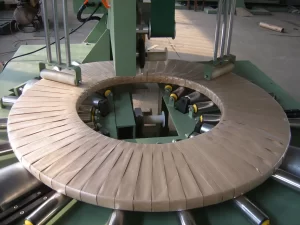
copper coil wrapper2 4. Key Technical Specifications & Features (Representative Parameters)
While specifications vary by model and manufacturer, typical parameters operators and engineers consider include:
- Coil Size Capacity:
- Inner Diameter (ID): e.g., 300mm - 700mm
- Outer Diameter (OD): e.g., 500mm - 1200mm
- Coil Width/Height: e.g., 50mm - 500mm
- Maximum Coil Weight: e.g., 50kg - 500kg+
- Wrapping Efficiency:
- Ring Speed (RPM): e.g., 40 - 90 RPM
- Packing Speed: e.g., 20 - 40 seconds per coil (dependent on coil size and wrap configuration)
- Packaging Materials:
- Stretch Film (LLDPE): Standard widths (e.g., 76mm, 100mm) and thicknesses
- VCI Paper/Film: For corrosion inhibition
- Crepe Paper / PP Woven Belt: For specific protection needs
- Control System:
- PLC (Programmable Logic Controller): For reliable automated sequencing (e.g., Siemens, Allen-Bradley, Mitsubishi)
- HMI (Human-Machine Interface): Touch screen for parameter setting (wrap patterns, tension, speed), diagnostics, and operation monitoring.
- Power Requirements: e.g., 380V, 3-Phase, 50/60Hz (Varies by region and machine size)
- Pneumatic System: Required air pressure (e.g., 0.5 - 0.7 MPa) for certain actuators.
5. Benefits Beyond Basic Wrapping: Operational & Business Impact
The advantages highlighted earlier translate into tangible business benefits:
- Enhanced Product Protection: Consistent tension and complete coverage significantly reduce scratches, dents, and contamination during handling, storage, and shipping. Use of VCI materials adds crucial corrosion protection.
- Increased Throughput and Efficiency: Automating the wrapping process dramatically reduces cycle times compared to manual methods, boosting overall packaging line productivity. A machine might wrap a coil in 30 seconds, whereas manual wrapping could take several minutes.
- Improved Consistency and Quality Control: Every coil receives the same high-quality wrap, eliminating human variability and ensuring packaging standards are met consistently. This enhances brand perception and reduces customer complaints related to shipping damage.
- Labor Savings and Operator Safety: Frees up personnel for less strenuous, higher-value tasks. Reduces ergonomic risks associated with manual lifting and wrapping, contributing to a safer work environment.
- Material Optimization: Precise control over film stretch and overlap minimizes material consumption compared to inconsistent manual application, leading to cost savings.
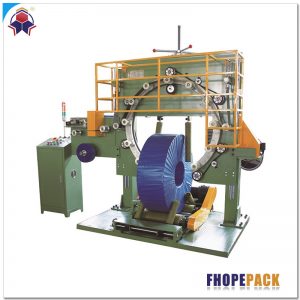
fhopepack copper coil packing machine 6. From the Shop Floor: Practical Considerations & Operator Experience
Having worked with or observed these machines in operation, several practical points emerge:
- Ease of Use: Modern machines featuring intuitive HMIs allow operators to easily select pre-programmed recipes for different coil sizes or adjust parameters quickly. Clear error messages and diagnostics simplify troubleshooting.
- Maintenance: Routine checks typically involve inspecting rollers, belts, the cutting mechanism, and ensuring the film path is clear. Preventative maintenance schedules are crucial for long-term reliability. Access for cleaning and maintenance is a key design consideration.
- Integration: These machines often need to integrate seamlessly with upstream coil handling equipment (decoilers, slitters) and downstream systems (conveyors, palletizers). Compatibility and communication protocols are important.
- Material Handling: Efficient loading and unloading sequences are vital to maximize the machine's throughput. This might involve specific conveyor designs, tilting mechanisms, or even robotic integration depending on the level of automation.
7. Material Versatility: Choosing the Right Wrap
The choice of wrapping material depends on the level of protection required:
- Stretch Film (LLDPE): Most common for general protection against dust, moisture, and providing stability.
- VCI (Volatile Corrosion Inhibitor) Film/Paper: Essential when long-term storage or shipping in corrosive environments is expected, protecting the copper from oxidation.
- Crepe Paper / Woven Belts: Can offer additional cushioning or specific surface protection.
The machine should ideally be capable of handling the required material types effectively.
8. Conclusion: An Indispensable Asset for Copper Coil Handling
The Automatic Copper Tube Coil Packing Machine is far more than just a wrapper; it's a strategic investment for any business involved in the production, distribution, or processing of copper tube coils. By automating this critical process, companies can achieve significant improvements in efficiency, product protection, operational consistency, and worker safety. Its ability to handle various coil sizes and integrate into broader production lines makes it a versatile and reliable solution for streamlining packaging operations and protecting valuable copper products throughout the supply chain. Evaluating factors like coil dimensions, required throughput, material needs, and integration capabilities will ensure selection of the right machine to meet specific operational demands.
For further details on specific solutions:
https://www.fhopepack.com/Coil_packing_machine.html
Contact us for inquiries: info@fhopepack.com

